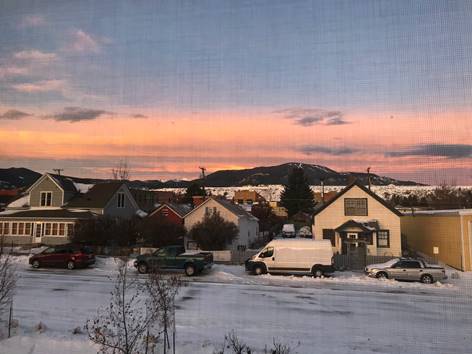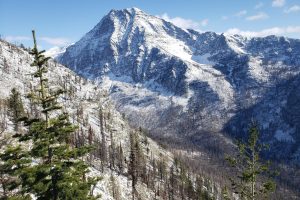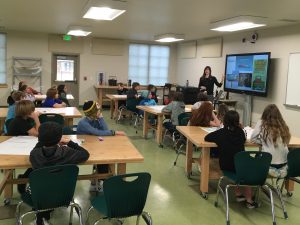By Robin Adams
Like many of the other Energy Corps members serving now, these first two months of service have been quite the transition. This is actually the longest I’ve stayed put in a year and a half. While there are definitely aspects of living out of a backpack that I miss, Red Lodge has been a wonderful new home to grow some roots and focus on projects that extend beyond myself.
Explaining what exactly I’m doing for the City of Red Lodge can be difficult to keep short and simple. It seems to change week by week as I learn more about the reality and complications of what it actually means to make a community more sustainable and resilient to change. I try to explain what a Sustainability Coordinator is with the City’s Energy Conservation Plan to communicate how solar, recycling, compost, LED lights, occupancy sensors, stormwater diversion, water conservation, bike share programs, hybrid/electric vehicles, native plant rain gardens, and greenscaping could all be related. However, if people latch onto one aspect of my service – “OH! You’re the solar person!” or “So you’re the new Kathryn?” – I don’t mind so much.
Energy Corps is in its fifth year in Red Lodge, and the two members who served before me have managed to give me rather large shoes to fill. This has set me up well because there is a wealth of resources and contacts for me to engage in community organization.
I’d like to share some things I’ve learned about community organizing in the last two months. Obviously every community is different, so while I tried to keep it general enough I am absolutely putting these points through the lens of my experience in Red Lodge.
Network
I don’t think I’ve ever sent more emails, made more calls, or shook more hands in a two month period. I’ve always had an aversion to the word “networking” because it sounds very corporate and business-like, but I’ve come to learn that it’s essential if you want to organize a community.
It’s really just about identifying resources that two (or more!) separate parties have and coming up with ways to pool them to achieve a common goal. Many times the seed I plant in an initial interaction will grow into something unforeseen and wicked cool.
Listen
This has been especially important for me as a new resident from California with a background totally unrelated to sustainability. Red Lodge is a unique, small community and there are lots of folks who have been here for generations. There is also a strong wind of activism in this area with 70 registered 501 3(c) nonprofits in Carbon County, many of which take on projects related to sustainability.
Basically, I’m not here to be the star of the show – I’m here to show up, to listen, and to add to the conversation that’s already happening. If I meet resistance from experts, department heads, and community members for something I’m excited about I need to re-evaluate why I’m fighting the tide with it. If the problems can be answered with reasonable solutions then I’ll try again, but otherwise I refocus on projects with more momentum.
Establish Goals
“Goals” is super vague and can mean overarching goals like:
See a 50% reduction of the City’s emissions from 2016 levels by 2040.
Goals also apply to the small steps that help the big ones like:
Adopt bylaws and elect officers in the next Sustainability Board meeting.
Both of the above goals were formed with community input – the first took months of meetings with dozens of community members, collecting data for a baseline inventory, and City Council adoption to establish. The smaller one was determined by 5 people within an hour. Having clear and common goals can be really helpful to keep everyone on the same page, whether it’s the whole community, department heads and City Council, or a small task force.
Patience… but Follow Up
This has been a difficult one for me. I need to remind myself that most of the organizations, departments, and individuals I’m working with already have a full plate, and many of them are donating time on top of a full time job. It’s unreasonable to expect other people to be as pumped about things like sewage sludge and Kelvin ratings as I am, so a grace period is essential.
This also rings true when it comes to government work. My perception of the timeline for most of these projects has changed considerably compared to when I first started. This is due to limited funding, snow in the winter, busy electricians, waiting for the next City Council or City board meeting to roll around for required approval, etc…
The important thing here is to stay organized and not let things fall through the cracks. Follow up with people as often as is necessary, and keep interested parties updated with what you’re doing. If something is delegated to a team member then make it clear they’ll be held accountable for that task at the next meeting.
Evaluate Results
Once the planning and goal-making stage is done and steps have been implemented, it’s important to sit down and see what the end result actually was. This could be the time to send out a survey, hold a public forum, do another inventory to compare to baseline, or maybe for a smaller goal 10 minutes need to be dedicated in a meeting to get input from a team. Writing down cohesive feedback on what went well and what could’ve been different will help any recurring projects/events and can inform other communities that may be interested in similar projects.
I guess I should add a little disclaimer that I’m still figuring out community organizing and I expect it to be a constant learning process. In the spirit of Thanksgiving season, I’d also like to say that I’m so happy to hold such a challenging and fulfilling service position that allows me considerable freedom, contentment, connection, and flexibility. Doesn’t hurt that the ski mountain is 10 minutes away either.
I’m very thankful to have landed a service position in Red Lodge.








